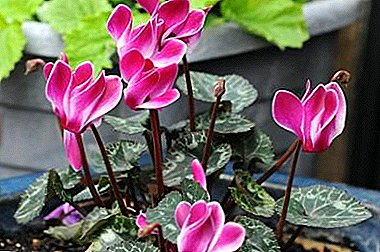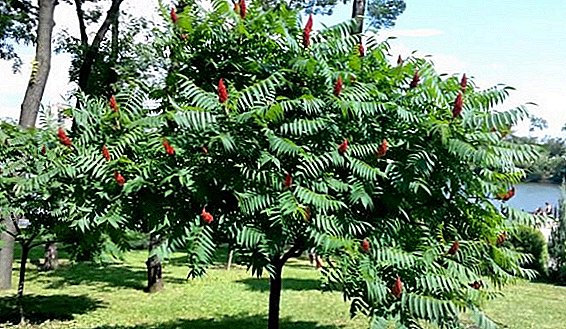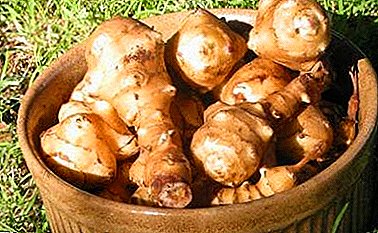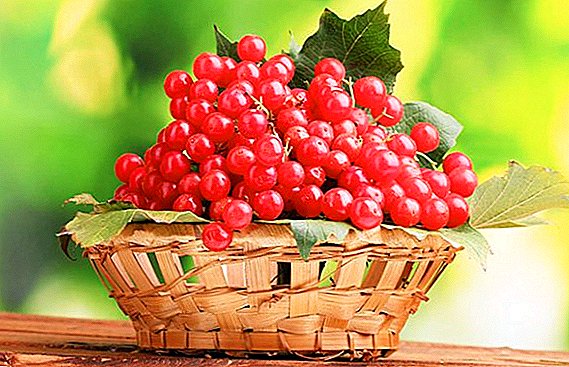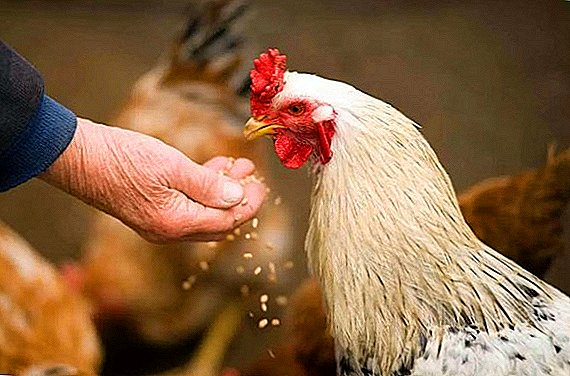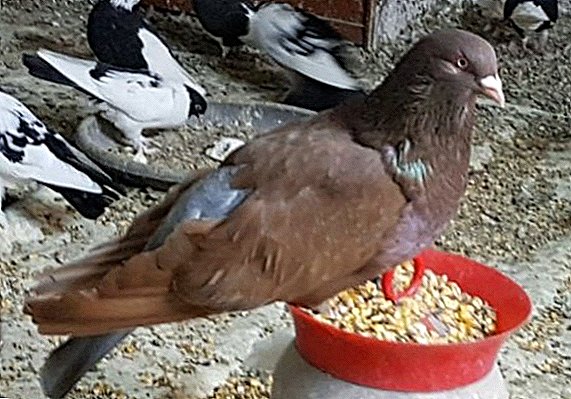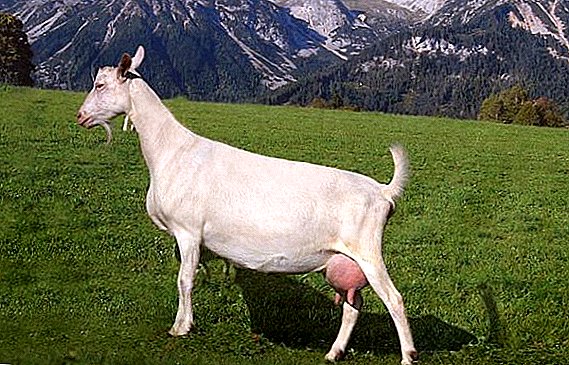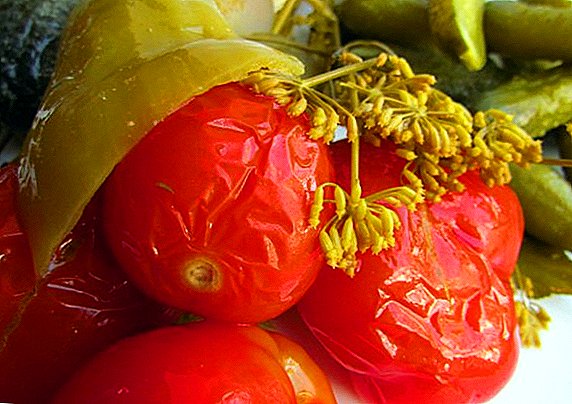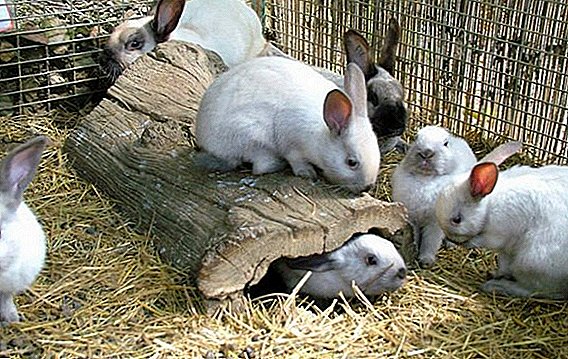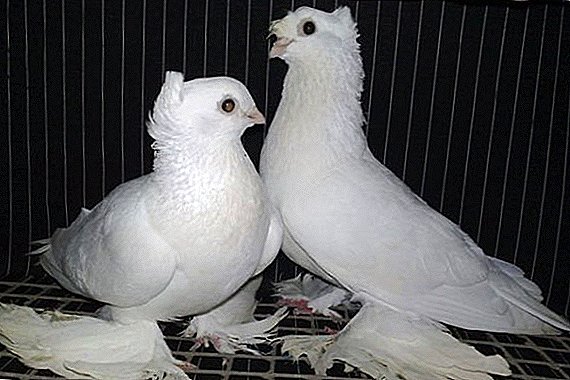 Pigeons kasanas belong to the flight breeds, and in the style of flight - to the fighting ones. The style of their flight is incorporated in them genetically, but does not appear immediately. Consider the features of these birds and read the terms of their content.
Pigeons kasanas belong to the flight breeds, and in the style of flight - to the fighting ones. The style of their flight is incorporated in them genetically, but does not appear immediately. Consider the features of these birds and read the terms of their content.
History reference
This breed of pigeons are bred in Asian countries. Turkish kasanas are characterized by feathers on their paws, the presence of a forelock and eyebrows. North Caucasian individuals are painted in bright motley colors and have a long beak. Central Asian birds have a short beak and excellent flight qualities.
Did you know? Pigeons drink water in a very interesting way: they dip their beak into the water and draw in liquid through it, as if it were a straw.
Appearance and physique
The main features by which Kasan can be identified are as follows:
- the average weight of an adult individual is about 600 g;
- wing length about 25 cm;
- rounded or somewhat elongated head of a small size;
- average body size;
- There are varieties with forelock and eyebrows;
- the neck is of medium length;
- legs of medium height;
- some species may have feather pants on their feet;
- feather color can be different, but most often it is shades of gray and white, there are stripes of dark color, there are plain colors;
- the tail is of medium length, is on the same straight line with the back;
- the length of the beak may be different.
 Some specimens look very decorative.
Some specimens look very decorative.
Familiarize yourself with the breeding features of Turkmen and Uzbek pigeons.
Flight Features
Most of all kasan differ in manner of flight. These amazing birds fly low and often fly their wings like butterflies during flight. They do not fly in circles, but rise upwards. Their ability to fly in a pole is highly valued, especially the entrance to the pole with a turn. Some pigeons hang a pillar, others pull it up to a height of 3 to 20 meters. Their play in the air can last up to 5 hours.
The most beautiful thing is the flight of several pigeons.
The ability to fly in a fighting style begins to manifest no earlier than 3 months of bird life. There are individuals that reveal their flight abilities only for three years of life.
Important! For the manifestation of the flight qualities of these pigeons chase from an early age. At the same time it is necessary that adult birds fly along with the younger generation, and the latter copied their manner of flight.
Conditions of detention
In the care of pigeons breed Kasana unpretentious. They can be kept in the conditions of the cell.  For keeping these birds it is recommended to adhere to the following rules:
For keeping these birds it is recommended to adhere to the following rules:
- For housing as a dovecote, you should not use rooms with large space.
- Access to the street should be free.
- It is necessary to keep the room for living clean and dry.
- To organize the system of ventilation and ventilation.
- Dovecote should have perches and nests. Perches set at a rate of 30 cm per bird. Nests are important during breeding and should be at least 30x30 cm in size. The number of nests depends on the number of females. As nests you can use plywood boxes or round forms of plaster, on the bottom of which lay a bed of sawdust and straw.
- It is necessary to place troughs and drinkers. Their number depends on the livestock. For convenience, it is better to purchase or make automatic feeders and drinkers.
- You should take care of the baths for water procedures that birds need in the summer and during molting.
- It is better to equip the dovecot with two openings For battle pigeons they are made at a height of 1 m from the floor level.
- They make litter on the floor of sawdust, hay, straw, sand, peat not less than 5 cm thick. Clean litter should be monitored and changed completely twice a year.
You will probably be interested to learn how to build a dovecap with your own hands.
 The optimal mode for placing the pigeon house is as follows:
The optimal mode for placing the pigeon house is as follows:
- light day should be about 13 hours;
- temperature in summer - + 20-25 ° C, in winter - + 5-7 ° C;
- air humidity - 65-70%.
What to feed
During the day pigeons kasany should receive on average about 40 g of food. Feeding takes place twice a day. In this case, the reception of 10 g of food occurs in the morning before the workout, and the remaining 30 g should be given in the evening after the training sessions. Constant flights and training of pigeons contribute to a large expenditure of energy, so the pigeons of this breed are particularly in need of carbohydrates.
Learn all about feeding pigeons.
During training and competition pigeons are fed with sugar. After these classes, birds receive encouraging delicacies - rapeseed, colza and other oil crops. Schooling to the incentive delicacy contributes to the development of a reflex in a pigeon to always return to the native pigeon house.
The ration of pigeons of the kasana breed is approximately as follows:
- peas - 35%;
- barley kernels - 20%;
- Vika - 10%;
- millet - 10%;
- oat kernels - 10%;
- corn -10%;
- wheat - 5%.
VIDEO: HOW TO FEED AND SOW PIGEONS It is necessary to include river sand and small gravel in the food - these elements assist in the digestion of food. Drinking water should be separated at room temperature, and in winter it is recommended to warm it up a little. Do not forget about the greens and add it to the diet, especially in winter. Sunflower seeds are given only in raw form and in limited volume. As an additive for a change, you can give boiled potatoes and pumpkins, grated carrots will also be useful.
It is interesting to know how they look and where you can see pigeons chicks.
To increase the activity and strengthen the body in food include special vitamin and mineral supplements. For the receipt of minerals, you can use chopped egg shells, shell rock, chalk with food. Bob pigeons of the kasan breed in the summer period fly a lot of time, and various insects, greens, and grasses replenish their diet. That is why at this time home feeding can be reduced.
During the period of molting and breeding, as well as feeding the chicks, pigeons need vitamin supplements.
Important! In winter, the feeding rate is increased, since a lot of energy in the cold period is spent on heating the body, and in the cold time only homemade food is used as a source of nutrition.
Vaccination against diseases
This breed is prone to salmonellosis and Newcastle disease.  For vaccination against Newcastle disease, use the following drugs:
For vaccination against Newcastle disease, use the following drugs:
- Avivak (or Bor-74). Vaccination is done at the age of 3-4 months. This drug produces immunity to the causative agent of the wibs 28 days after vaccination.
- "La Sota". The first vaccination is made when the birds reach the age of 30-35 days. Do such a vaccination twice a year - in spring and autumn. After vaccination, the immune system is produced after 14 days and lasts about three months or more.
- "GAM-61". Vaccination with the use of this tool is carried out twice a year by instillation into the nose or watering. Preference is given to instillation into the nose. For this, the vaccine ampule is dissolved in 2 ml of boiled water with a temperature of about +20 ° C. Then such a solution with a pipette instilled a pigeon in one drop in each nostril.
Find out what diseases pigeons can infect people.
Vaccination for salmonellosis should be done twice a year. It can be used from six weeks of age. You can use the vaccine "Salmo PT" (50 ml), which contains 100 doses (0.5 ml per individual). The vaccination is done with a syringe under the skin on the neck. This vaccine contributes to the formation of immunity to pathogens of salmonellosis a few days after re-vaccination and lasts for three months. Vaccination should be carried out twice with an interval of 21 days.
The remaining diseases are not so terrible for the Kasan.
Did you know? Dove breeds Kasana are very caring mommies: they can hatch not only their own, but also other people's eggs. Chicks hatch 19-20 days after laying eggs. Males are also involved in brooding, but spend less time on this than females.Pigeons of the Kasan breed can differ among themselves by some external characteristics. Their main feature is the manner of flight, which may not be immediately apparent. These birds are quite unpretentious, and care for them is not difficult. The main thing: time to vaccinate them against major diseases.


